TABLE 15-5
What are the factors that determine the acceleration time (in sec.) from 0 to 60 miles per hour of a car? Data on the following variables for 171 different vehicle models were collected:
Accel Time: Acceleration time in sec.
Cargo Vol: Cargo volume in cu. ft.
HP: Horsepower
MPG: Miles per gallon
SUV: 1 if the vehicle model is an SUV with Coupe as the base when SUV and Sedan are both 0
Sedan: 1 if the vehicle model is a sedan with Coupe as the base when SUV and Sedan are both 0
The regression results using acceleration time as the dependent variable and the remaining variables as the independent variables are presented below.
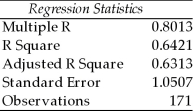 ANOVA
ANOVA

 The various residual plots are as shown below.
The various residual plots are as shown below.
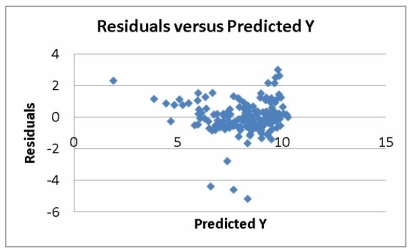
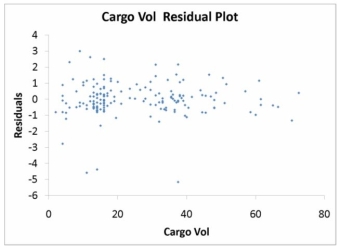
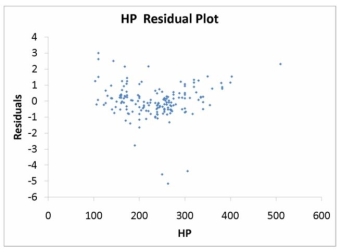
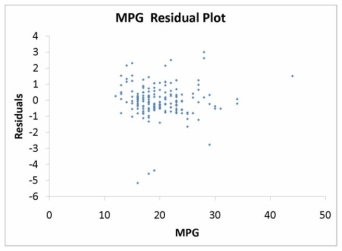
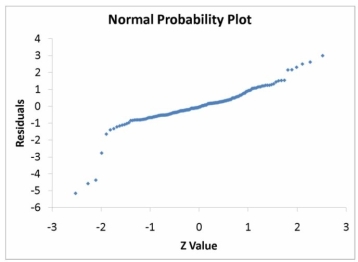 The coefficient of partial determination (
The coefficient of partial determination (  ) of each of the 5 predictors are, respectively, 0.0380, 0.4376, 0.0248, 0.0188, and 0.0312.
) of each of the 5 predictors are, respectively, 0.0380, 0.4376, 0.0248, 0.0188, and 0.0312.
The coefficient of multiple determination for the regression model using each of the 5 variables as the dependent variable and all other X variables as independent variables (  ) are, respectively, 0.7461, 0.5676, 0.6764, 0.8582, 0.6632.
) are, respectively, 0.7461, 0.5676, 0.6764, 0.8582, 0.6632.
-Referring to Table 15-5, what is the correct interpretation for the estimated coefficient for MPG?
Definitions:
Expressly State
To explicitly specify or declare something in a clear and unequivocal manner.
Agency by Operation of Law
A legal principle that creates an agency relationship due to circumstances or law rather than an agreement between the agent and principal.
Charges
Fees or financial obligations imposed by an entity for services rendered or as penalties for non-compliance with laws or regulations.
Account
A record summarizing the financial transactions pertaining to a specific period or purpose, such as savings or checking in a bank.
Q36: What is a difference between chlorophyll a
Q46: Referring to Table 13-3, suppose the director
Q63: Referring to Table 15-1, does there appear
Q86: Referring to Table 17-4, what is the
Q93: Referring to Table 15-4, what is the
Q98: The coefficient of determination (r<sup>2</sup>) tells us<br>A)
Q123: Referring to Table 16-3, if this series
Q127: Referring to Table 14-5, at the 0.01
Q189: Referring to Table 14-15, the alternative hypothesis
Q205: Referring to Table 14-3, when the economist